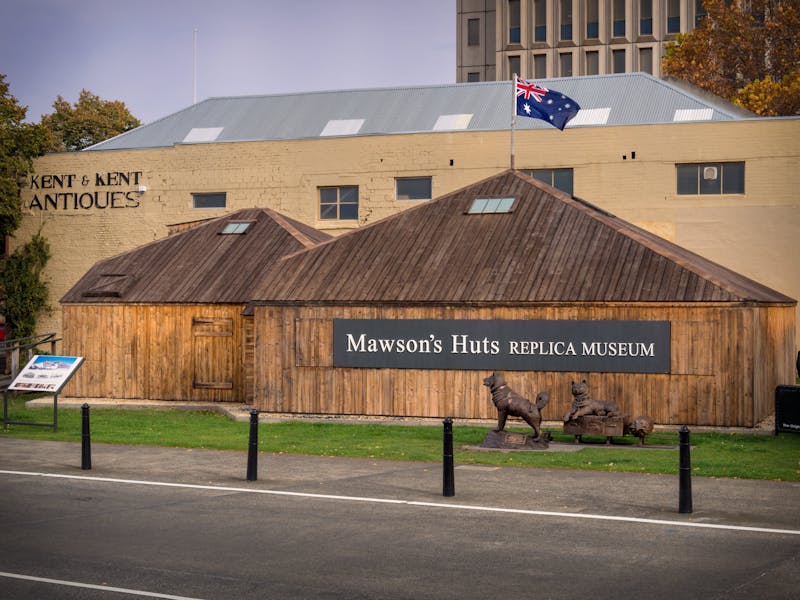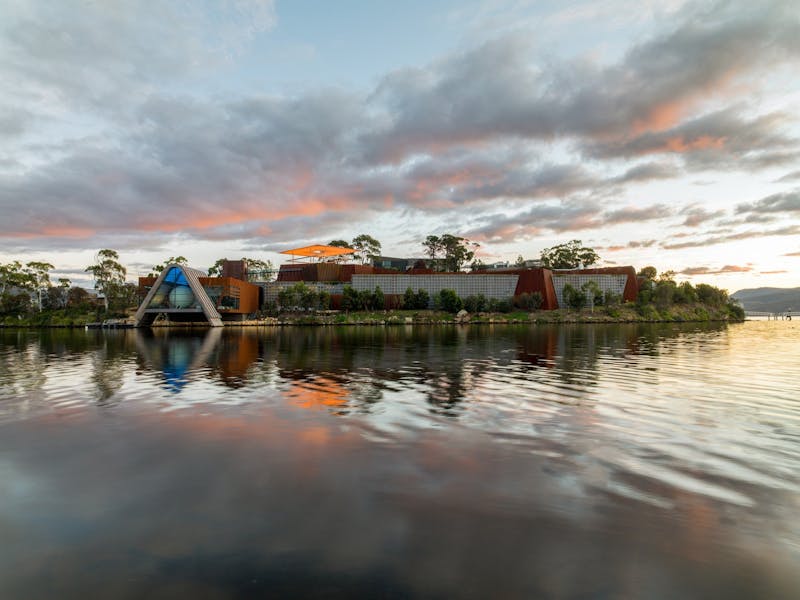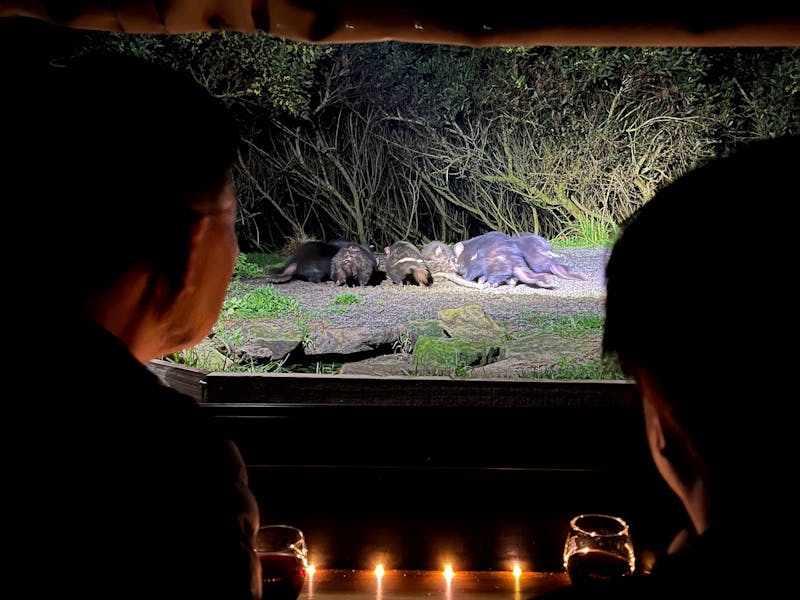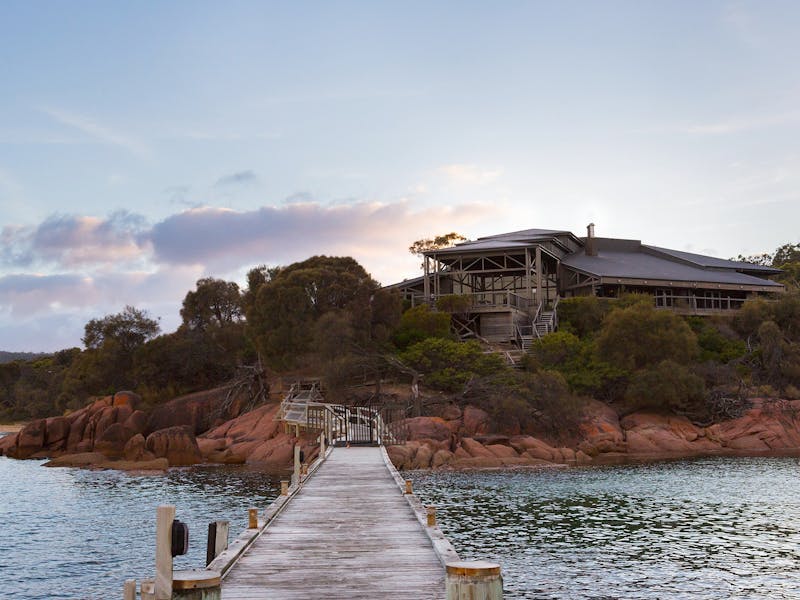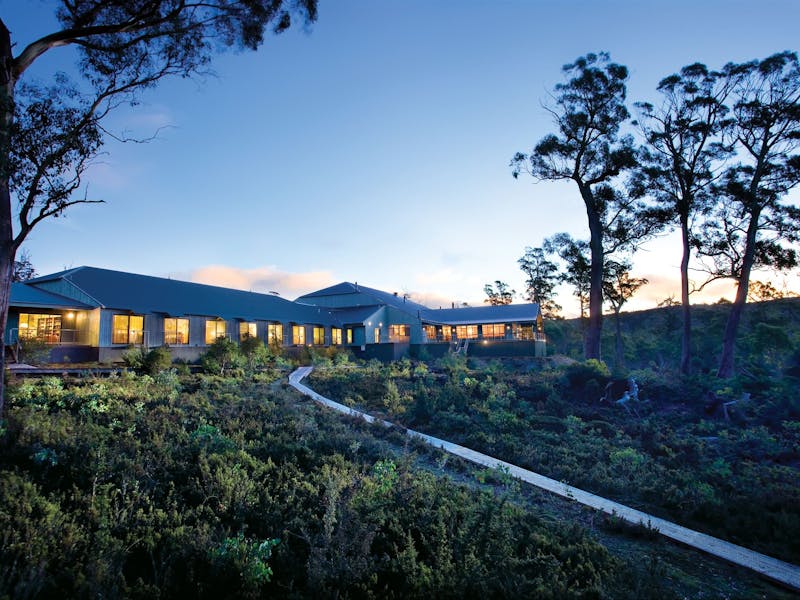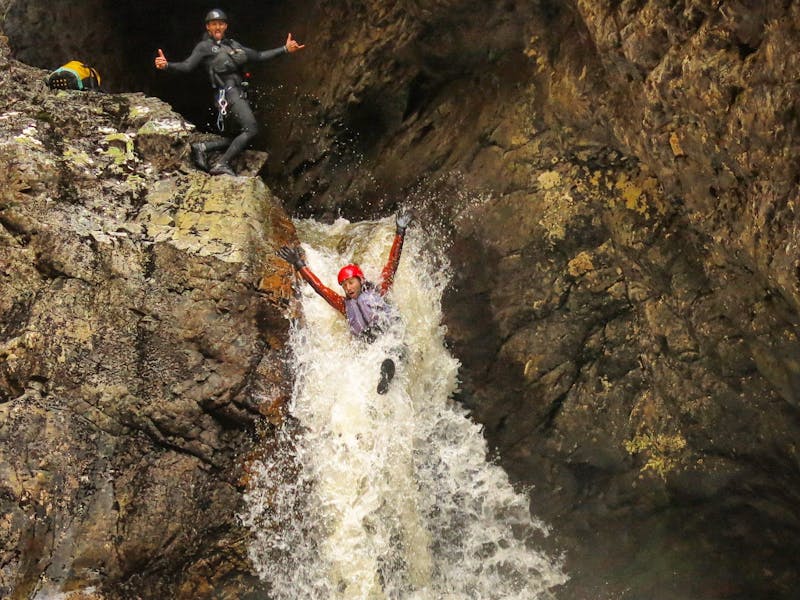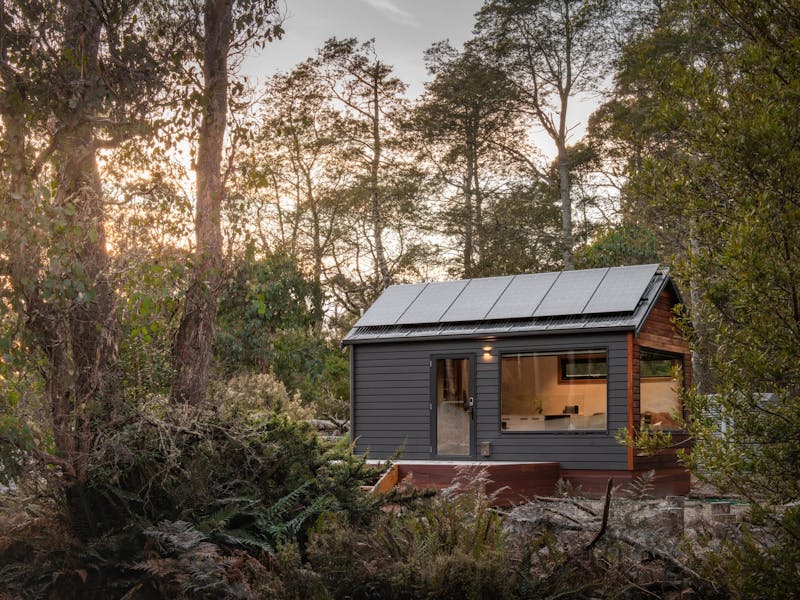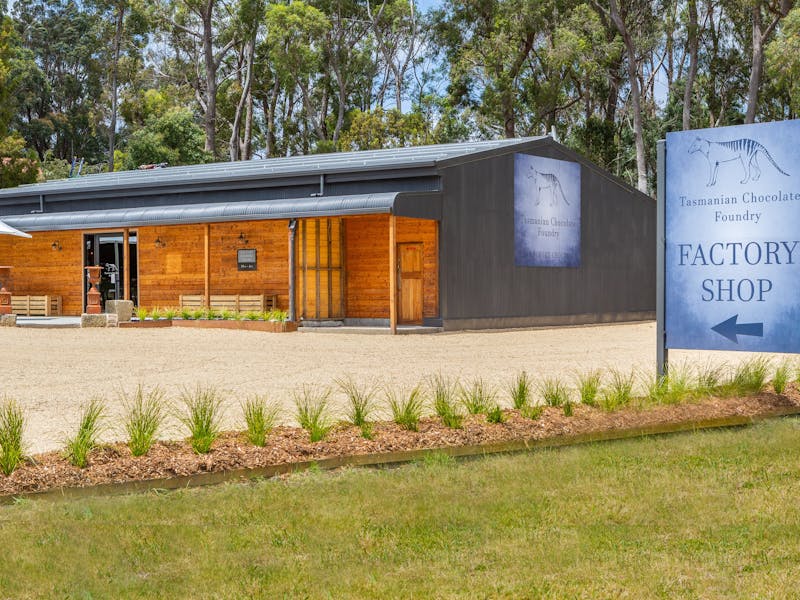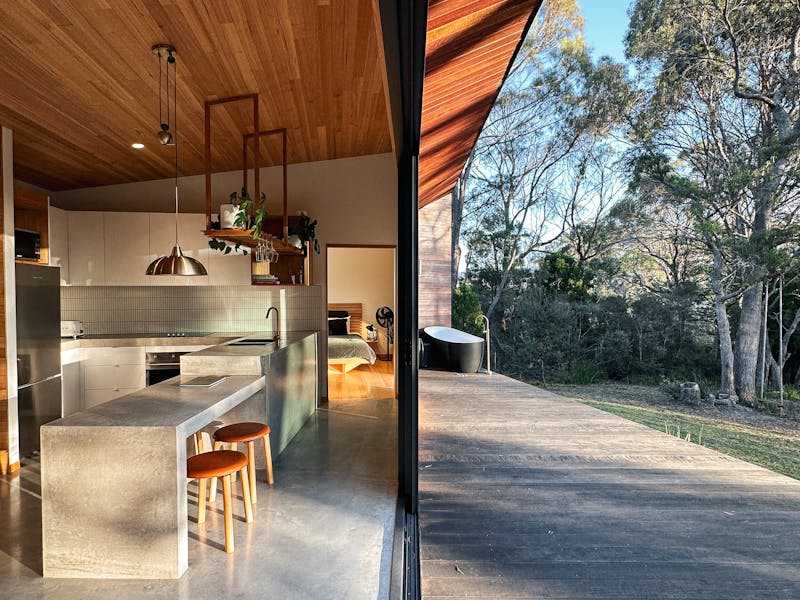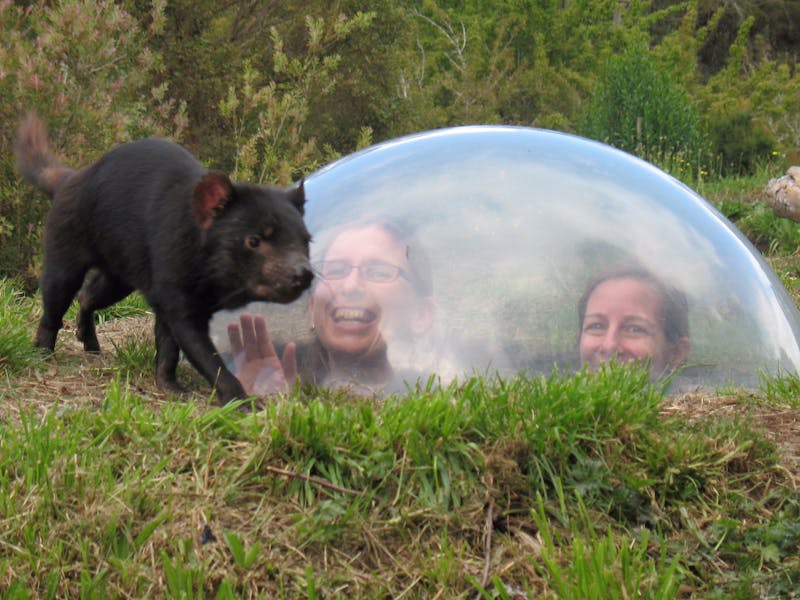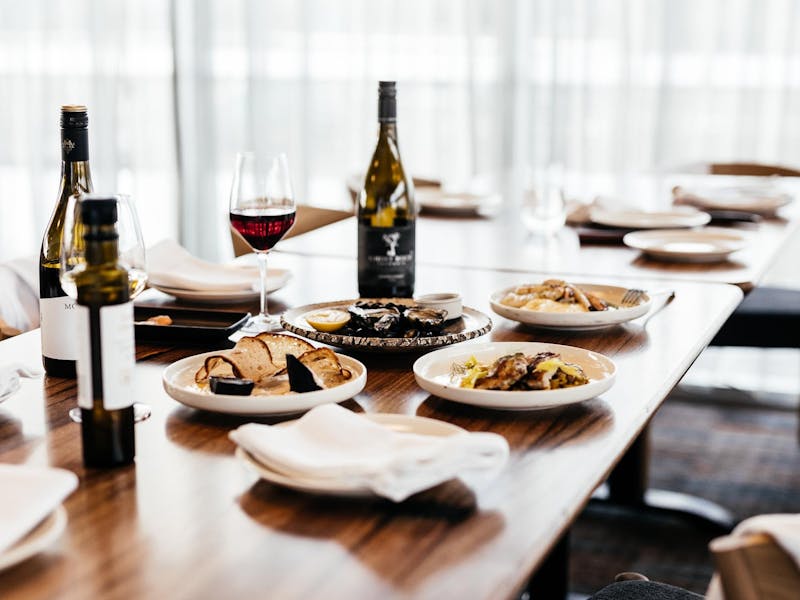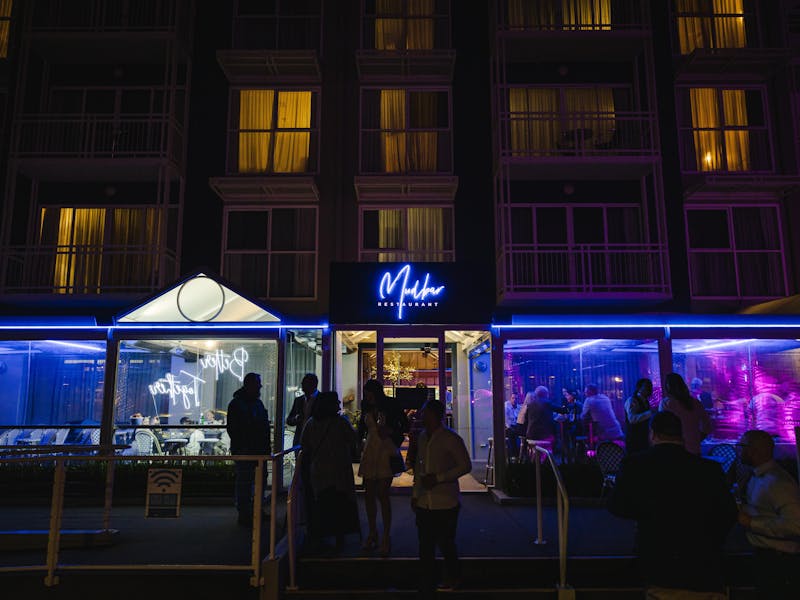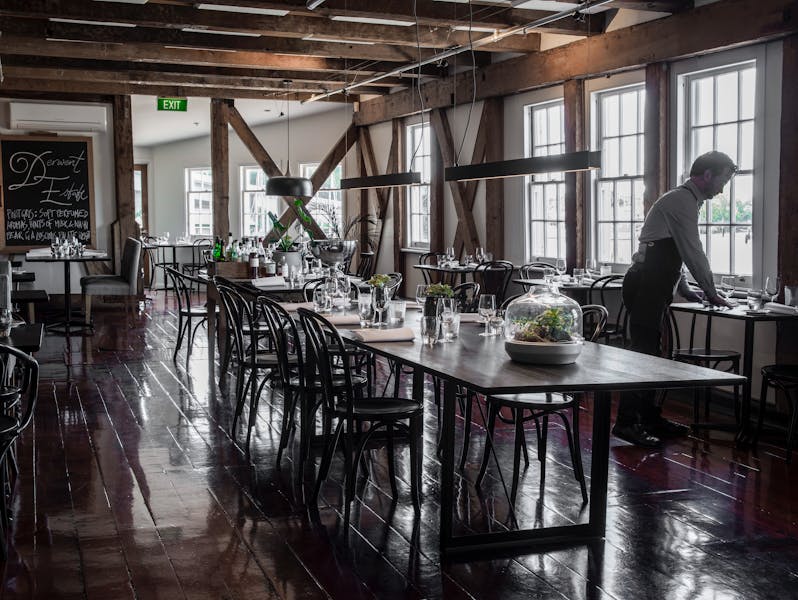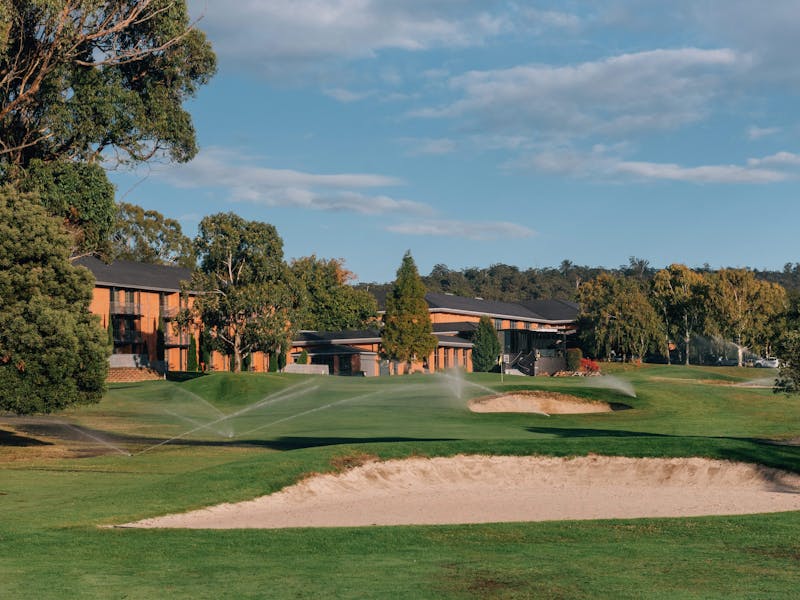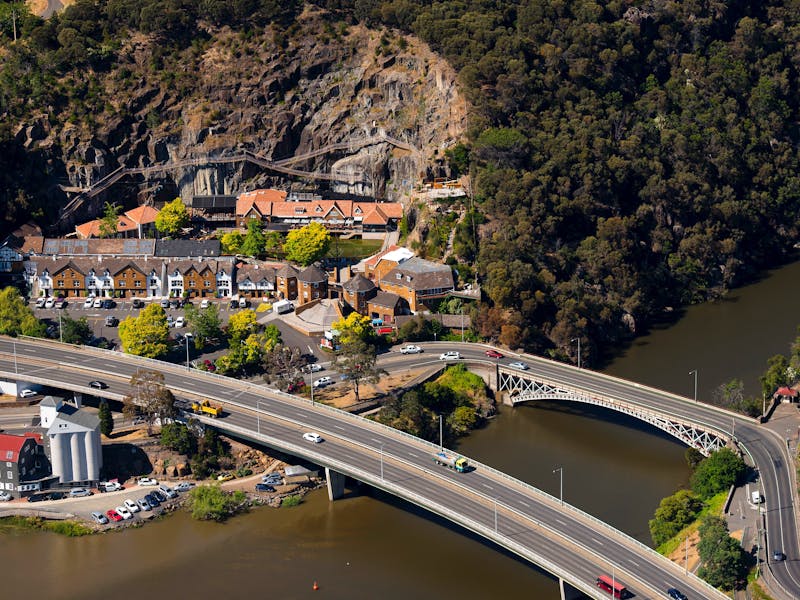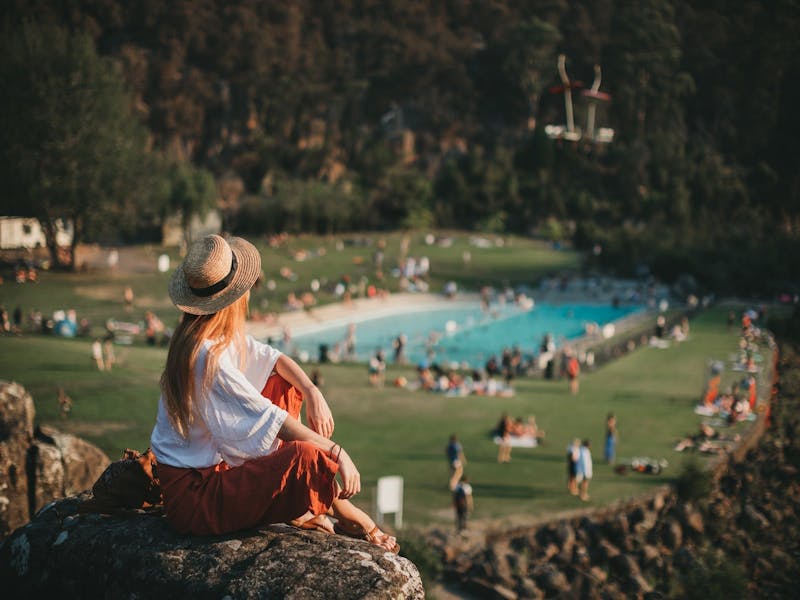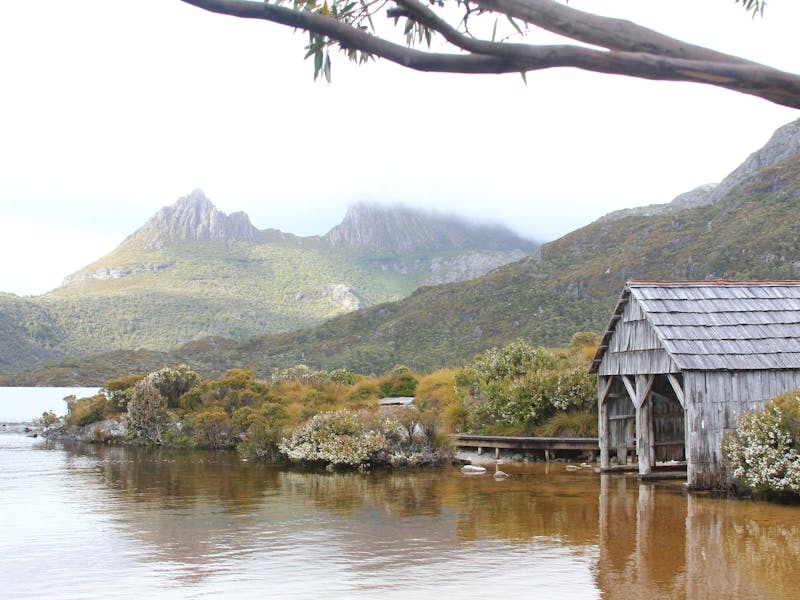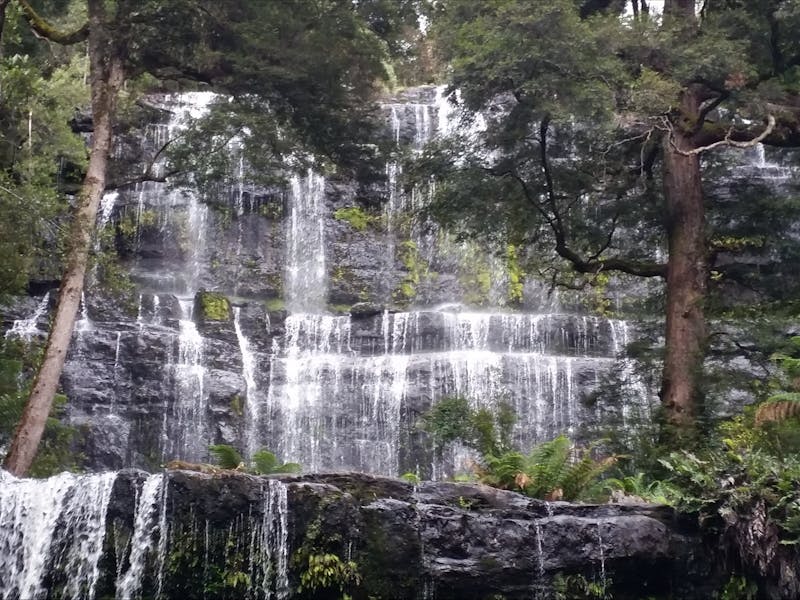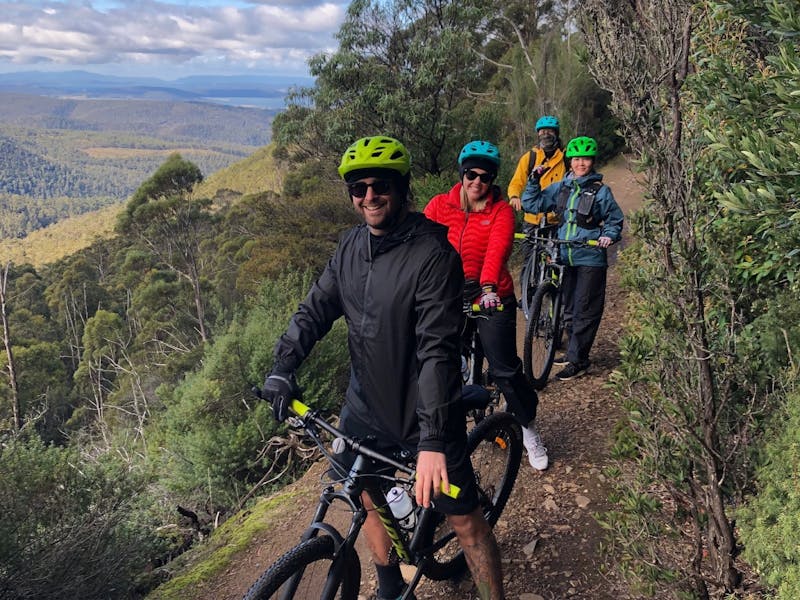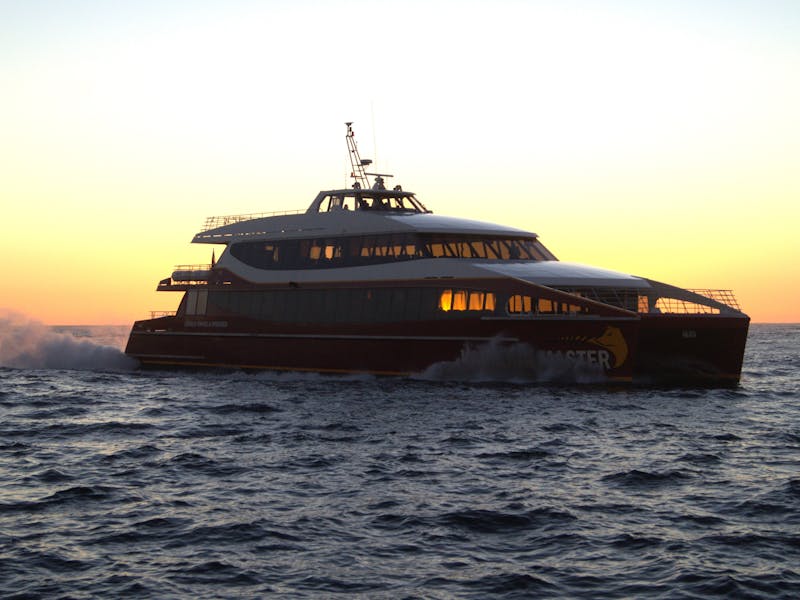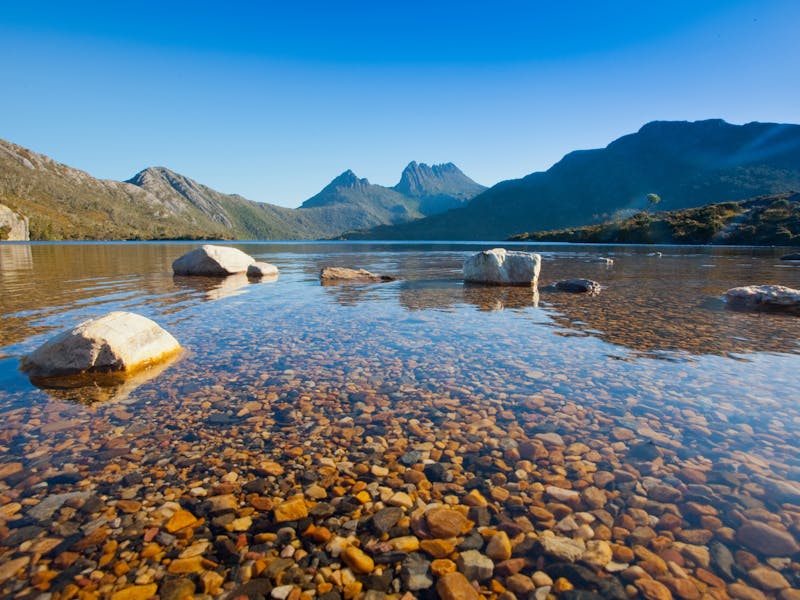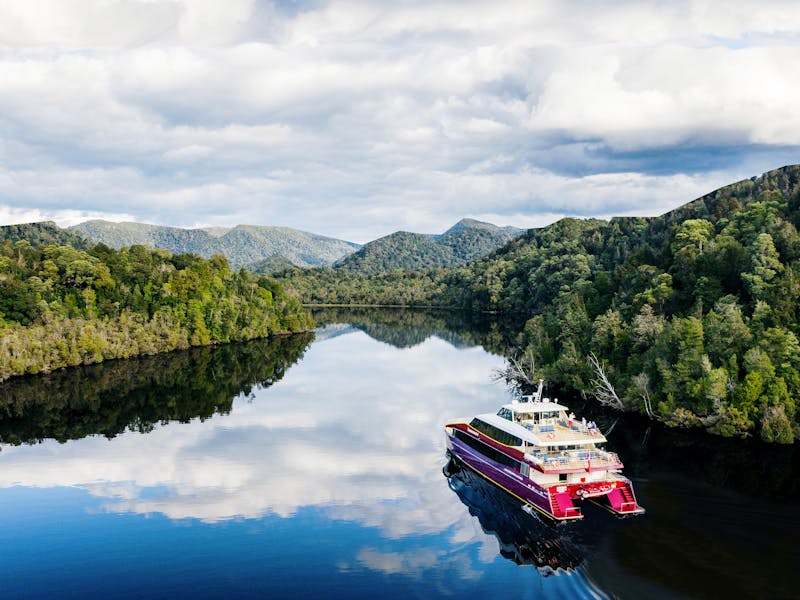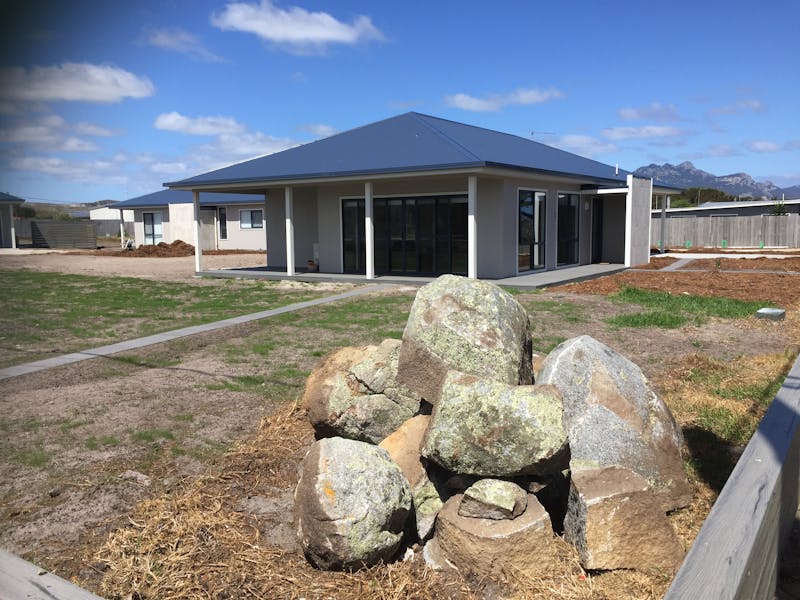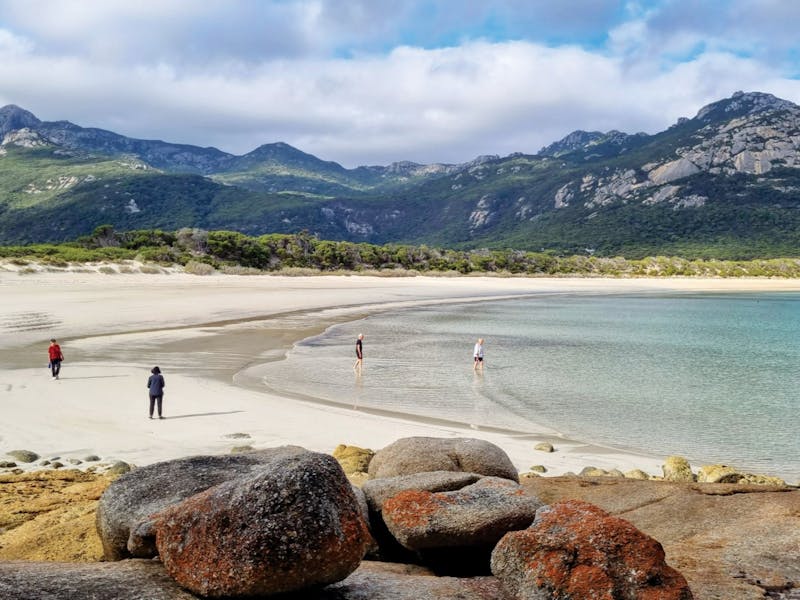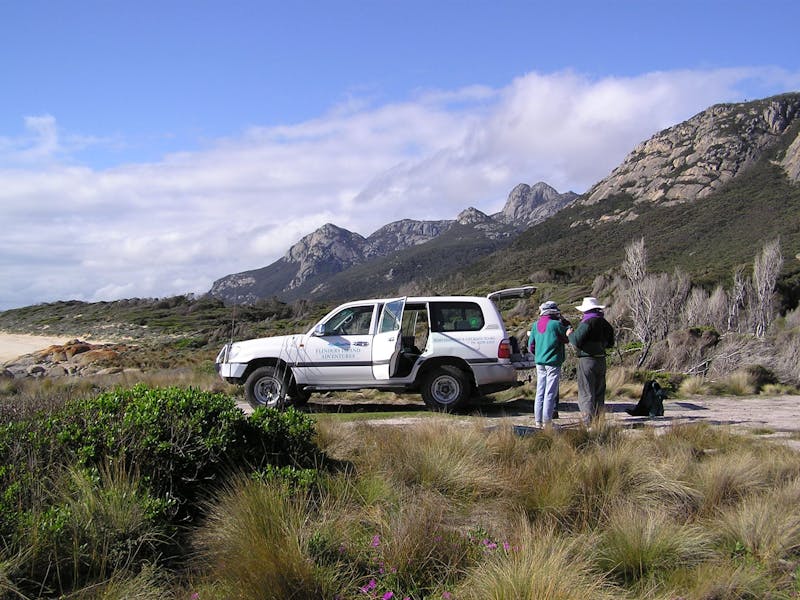
Choosing Tasmania’s top attractions is like picking your favourite children.
Here are our current top 10 Tasmanian attractions, in no particular order.
Stargazing
Look up. In a world where more than 80% of people live with light pollution, the night skies in Tasmania are dark and dazzling. The further south you go, the closer you feel to the unpolluted night sky, sparkling with constellations and the spilt-milk mess of the Milky Way. Tasmania is also one of the few places in the world to see the elusive natural lightshow of Aurora Australis, or the Southern Lights. Your chances of seeing this sky spectacle improve the further south you head.

Night sky, Larapuna / Bay of Fires area
Mona
It’s best to bring a sense of humour to Mona. Curiosity is useful, too. And a sense of wonder. The remarkable Museum of Old and New Art, carved into a headland at Berriedale, 13km north of Hobart’s CBD, has been called many things since its shock-and-awe opening in 2011. At heart, Mona is a world-renowned art collection that doesn’t take itself too seriously. It’s a place to appreciate art, without the pretension. Come here to have fun, sip wine, be shocked, be delighted, laugh, catch a gig, eat a burger or dine in style.


Void Bar, Mona
Wineglass Bay
The white-sand curve of Wineglass Bay is a big, bold smile on the face of Tasmania. It takes a little effort to see this photogenic landmark, turning a trip to this famous beach into a pilgrimage of sorts. This bay is the star of Freycinet National Park, which occupies most of the Freycinet Peninsula on Tasmania’s east coast, and shares the limelight with the pink-granite Hazards mountain range, a clutch of turquoise beaches and abundant wildlife.

Wineglass Bay and the Hazards mountains
Cradle Mountain-Lake St Clair National Park
Encompassing Tasmania’s most famous natural landmark – Cradle Mountain – as well as Australia’s deepest lake and seven of the island's 10 highest mountains, Cradle Mountain-Lake St Clair National Park is one of Australia’s greatest natural treasures. It’s a park filled with alpine treats, from wildlife to glacial lakes and hillsides that blush yellow and red in autumn when the deciduous fagus plant turns in colour. Threading through it all is a web of walking tracks, including the beloved multiday Overland Track.

Boat shed, Dove Lake and Cradle Mountain

Port Arthur Historic Site
Tasmania’s most famous convict settlement combines an idyllic coastal setting with a brutal history. About 12,500 convicts served sentences at what is now the World Heritage-listed Port Arthur Historic Site. You'll find more than 30 buildings and ruins across this site on Turrakana / Tasman Peninsula, where sombre prison scenes contrast with the neat homes and gardens of soldiers and free settlers. Wander the grounds and join a tour to gain full appreciation of this pivotal destination in Australian history.


The Penitentiary at Port Arthur
Tasting Trail
The list of treats along the Tasting Trail reads like a luxe, well-stocked minibar: truffles, ice-cream and hazelnuts; olives, wine and whisky; honey, oysters and craft beer; salmon, cider and berries; pickled onions, kimchi and chocolate. Stretching across northern Tasmania from Launceston to Smithton, the driving trail is dotted with almost 50 stops at artisanal producers. Bring it all together with a visit to the Harvest Launceston Community Farmers’ Market (aka "Harvest" to the locals), featuring the best of the region’s produce each Saturday in a city-centre car park.

Cataract Gorge
Cataract Gorge is a true urban wilderness – a 5km stretch of thickly forested river reserve wrapped around a dramatic gorge, just a stroll from Launceston’s city centre. It’s been a place to reconnect, unwind and relax for generations, with its welcoming web of walking trails. The reserve features a public swimming pool in summer, a historic rotunda, a cafe and restaurant, and a pleasant retro ride from bank to bank on a 308m chairlift, the central span of which is the longest of its kind in the world.


Kunanyi / Mount Wellington
Few cities can equal Hobart for its bewitching natural backdrop, with Kunanyi / Mount Wellington towering 1271 metres above the city. For Hobartians, 'the mountain' is part of daily life: a place to walk, ride mountain bikes, play in the winter snow and feel the reviving touch of nature, just a half-hour drive from the city centre. Stand almost anywhere in Hobart and you’ll see its forested flanks and feel the call of its trails and views.

Cruise the Gordon River
Winding through World Heritage-listed wilderness on the west coast, a cruise on the Gordon River typically offers spellbinding reflections of the surrounding forest and rare Huon pine trees. Join a boat cruise from Strahan, cutting through the inky waters of Macquarie Harbour, a body of water six times larger than Sydney Harbour. Cruises include a tour of Sarah Island, an infamous historical penal colony built to house repeat-offending convicts, and edge through the narrow and notorious harbour entrance known to convicts as Hells Gates.


Flinders Island
This is a distinctive island-off-an-island experience. The largest isle in the Furneaux Group off Tasmania’s north-east tip, Flinders Island rises from Bass Strait in a mesmerising line of beaches and mountains. Its rugged coast features white sandy beaches bordered by granite headlands. In the south, the island's highest mountains, granite-plated Strzelecki Peaks, emerge direct from the sea. Settle into island time, find a beach to yourself and let Flinders weave its natural magic.


